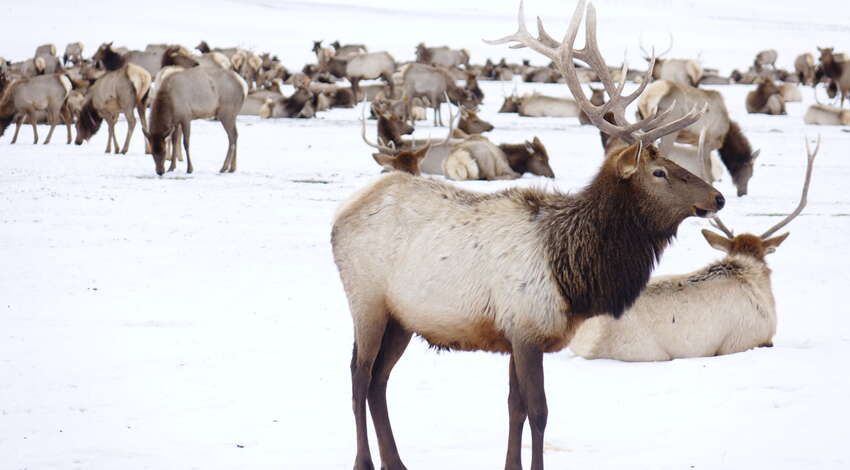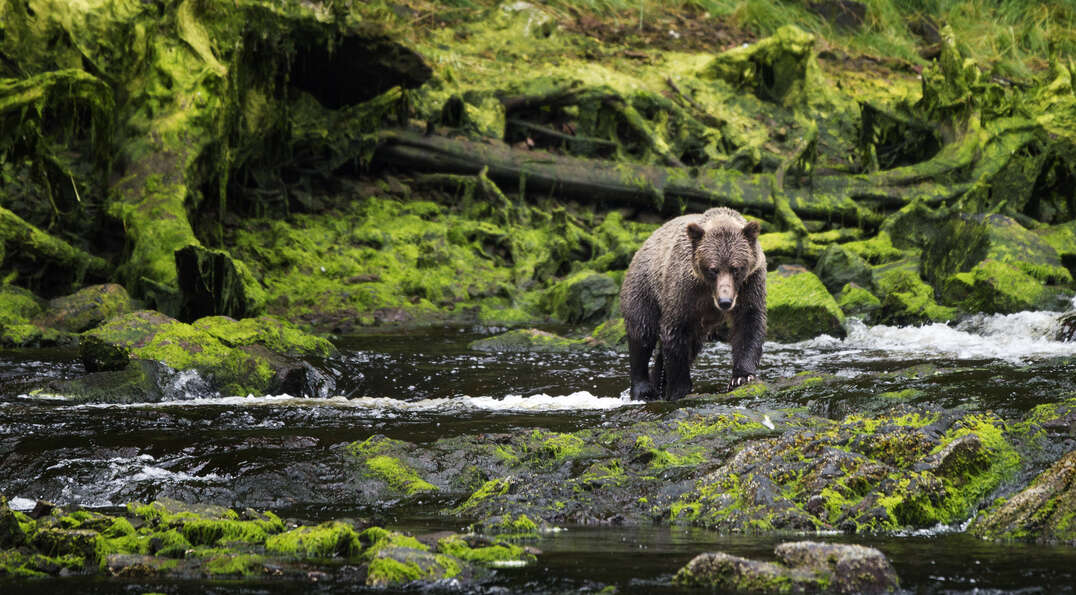Hiking Safe Guide: Wildlife Safety Tips for Older Adults
Discover essential wildlife safety tips for hikers and campers.
- Always observe wildlife from a safe distance, and never approach or feed animals.
- Store food securely and follow campground guidelines to avoid attracting wildlife when camping.
- Stay alert on trails by making noise and traveling in groups when possible.
- Learn how to react to specific animals, from bears and cougars to snakes and bison, as every animal has different defense mechanisms.
- Respect animals’ habitats and natural behaviors to keep both you and them safe.
- Preparation and awareness are the best tools for a safe and enjoyable outdoor adventure.

Hiking is one of the best ways for older adults to stay active, connect with nature and enjoy peaceful moments outdoors, but it’s essential to understand wildlife safety and stay alert to the natural world around you. From curious deer to more cautious wildlife like bears or snakes, knowing wildlife safety precautions and how to share the trail with animals can make your adventure safer and more rewarding. Review this hiking animal safety guide for tips on how to stay safe when encountering wildlife while hiking.
Why Wildlife Safety Matters
Wildlife encounters can be one of the most memorable parts of a hike, but they also come with real risks if you’re not prepared. Outdoor safety for older hikers is not only about avoiding dangers when encountering wildlife when hiking, but is also about preserving both your well-being and the animals’ natural behavior.
When people get too close, feed animals or leave food unattended, it can disrupt ecosystems and make wildlife dependent on humans for food, which can lead to aggressive behavior and put you and future hikers at risk. Whether you’re embarking on hikes and walks in North America or enjoying international trekking experiences by exploring hiking trails in Europe, practicing wildlife safety ensures that you enjoy nature with confidence while protecting the creatures that make our trails so special.
General Wildlife Safety Tips for Hikers and Campers
No matter the animal, there are some general wildlife safety tips every hiker and camper should keep in mind:
- Stay calm, avoid sudden movements.
- Know what wild animals you may encounter.
- Always hike with a partner (or a larger group).
- Know local wildlife and terrain.
- Report sightings to park rangers.
Is it better to approach animals with caution?
Yes, absolutely. It’s always better to approach animals with caution, or better yet, not at all. The safest and most respectful way to enjoy wildlife is from a distance. Even animals that seem calm or used to humans can behave unpredictably, especially if they feel cornered, startled or are protecting their young. Getting too close can stress the animal, disrupt its natural behaviors or cause it to associate people with food. A helpful guideline is the “thumb rule”: if you hold your thumb up at arm’s length and it doesn’t cover the entire animal, you’re too close. So, when it comes to wildlife safety precautions, never feed, never follow and always maintain a safe distance.

Camping Tips to Avoid Wildlife Encounters
If you’re spending the night or several nights in the great outdoors, knowing how to camp safely and avoid wildlife encounters is crucial to protecting you and your campsite. Some key camping tips to prevent curious bears and other animals from entering your camping area include ensuring you:
- Store food securely in bear-proof containers.
- Keep your campsite clean and scent-free.
- Avoid cooking near tents or water sources.
- Leave No Trace.
Essential Safety Gear and Equipment
If you’re on wildlife and hiking tours, it’s essential to carry key safety gear and equipment in case you encounter wildlife while hiking.
In your bag, make sure to carry:
- Bear spray, whistles and personal alarms
- Wildlife-safe food storage containers
- GPS, map and emergency communication devices
- First aid kits for bites and stings
- Trekking poles for defensive use
Dealing with Specific Animals in the Wild
With wildlife encounters, safety is of the utmost importance. Follow these wildlife and hiking safety tips to better understand how to navigate various types of wildlife encounters.
What to Do If You Encounter a Bear (Black Bear or Grizzly Bear)
If you come across a bear, such as a grizzly or black bear, stay calm and never run. Speak in a calm voice and slowly back away. If it’s a black bear, make yourself look larger by raising your arms. For grizzlies, avoid direct eye contact and play dead if attacked by lying flat and covering your neck. If you’re hiking in any area where bears call home, always carry bear spray and follow the instructions for use.
What to Do If You Encounter a Cougar (Mountain Lion)
For run-ins with a cougar, stand tall, maintain eye contact and back away slowly. Never turn your back or run, and make yourself appear larger by lifting your jacket or raising your arms. If it approaches, throw rocks or sticks to scare it off.
What to Do If You Encounter a Moose
Give moose plenty of space, at least 50 feet or more if possible. If it charges, run behind a large object like a tree, vehicle or boulder, and avoid getting between a mother and her calf, as they are highly protective.
What to Do If You Encounter a Bison
Particularly common in areas like Yellowstone National Park, bison can be extremely dangerous if encountered up close. Stay at least 100 yards away and never approach, even if they look calm. If one charges, run immediately and take cover behind something sturdy. Bison can sprint faster than humans and are unpredictable.
What to Do If You Encounter a Wild Boar
Wild boar may be unassuming at first, but can be unpredictable, as most wildlife is. Slowly back away and try to climb to higher ground or find shelter. Do not corner the animal, and if it charges, sidestep quickly and use an object like a backpack as a barrier.
What to Do If You Encounter a Snake
Snakes can be particularly frightening, and rightfully so. Stop immediately if you see a snake and slowly move away, as most snakes strike only when threatened. When hiking in tall grass or rocky areas, watch your step and never attempt to handle or provoke one.
What to Do If You Encounter a Mountain Goat
For mountain goat encounters, keep a wide distance and avoid staring directly at the goat. Do not feed or approach them, as they can become aggressive if they feel challenged or cornered.
What to Do If You Encounter an Elk
During the mating season, which happens to be autumn, elk can become territorial. Maintain a safe distance and back away if you notice signs of aggression, such as raised ears or hooves pawing the ground.
What to Do If You Encounter an Alligator
If you’re hiking in the south in areas such as in Everglades National Park, knowing how to navigate an alligator encounter is crucial. Keep at least 60 feet away from the water’s edge in alligator habitats, and never feed or approach them. If one moves toward you, run in a straight line away from the water.
What to Do If You Encounter Venomous Insects
Avoid swatting at bees, wasps or hornets, as this can cause them to swarm and perceive you as a threat. Move away slowly and cover exposed skin. If bitten or stung by a venomous insect, move to a safe location, clean the wound and seek medical attention if you experience swelling, difficulty breathing or dizziness.
Staying Wildlife Safe Means Staying Smart
Wildlife safety for seniors starts with awareness and respect for nature. By keeping your distance, staying calm and knowing how to respond in different situations, you can enjoy hiking and camping with greater confidence. Remember, most animals want to avoid humans, so your best defense is giving them space and appreciating them from afar. Review our guide on women’s hiking safety for additional tips on how to safely explore the outdoors.

